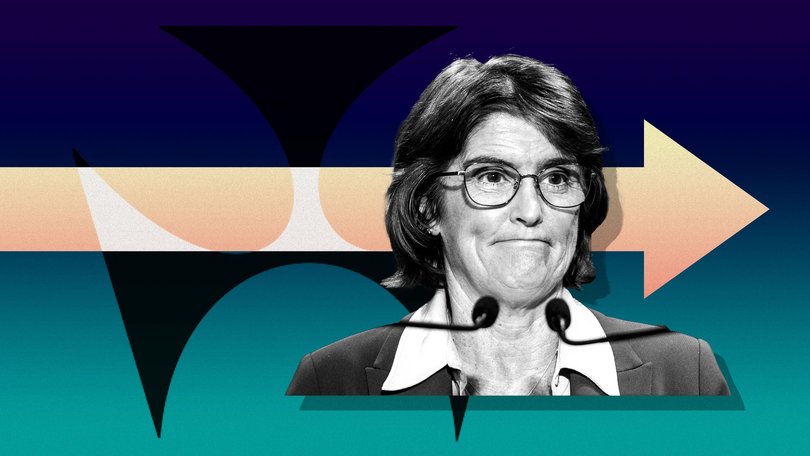Melbourne Cup Day rate cut becomes outside chance, RBA holds rates in September

The Reserve Bank held interest rates at 3.6 per cent in an unanimous decision on Tuesday with a warning to borrowers that it’s not in the business of cutting rates unless inflation is sufficiently under control.
Economists say the chances of a rate cut at the bank’s Melbourne Cup Day meeting on November 4 now hang in the balance, with September quarter inflation due on October 29 likely to swing a lineball decision either way.
However, Commonwealth Bank has already joined NAB in delaying its forecast for the next RBA cut to 2026.
Sign up to The Nightly's newsletters.
Get the first look at the digital newspaper, curated daily stories and breaking headlines delivered to your inbox.
By continuing you agree to our Terms and Privacy Policy.At Tuesday’s media conference Governor Michele Bullock also pushed back on suggestions the central bank has been too quick to cut rates in an outcome that has eased pressure on Australian home loan borrowers.
“What we’re focusing on now is making sure that we keep inflation low and stable,” said Ms Bullock. “We’re not trying to offset what happened in the past.
“We’re not in the business of offsetting price levels and giving people relief. We are in the business of targeting inflation and employment.”
The Governor also dismissed questions suggesting it should take more responsibility for the impact of soaring house prices on society and said the issue remains mostly related to a lack of new supply versus demand.
The latest Cotality (formerly CoreLogic) data is expected to show more strong Australian house price growth for September, after the central bank moved to ease rates three times in 2025 to 3.6 per cent.
In August house prices raced to new record highs up 0.7 per cent on the prior month and 4.1 per cent over the year.
However, in Tuesday’s monetary policy statement Ms Bullock warned property mad Australians that monthly inflation data for August had come in stronger than the central bank expected, and may point to limited or no more rate cuts this year.
“Recent data, while partial and volatile, suggest that inflation in the September quarter may be higher than expected at the time of the August Statement on Monetary Policy,” Governor Bullock said.
August’s monthly data showed headline inflation rose to 3 per cent at its highest level since July 2024 and the rise delivered an acceleration on the 2.8 per cent recorded in July 2025.
“We’ll have more information [on inflation] available in November... and then we can make a decision,” said Ms Bullock.
Inflation watch
The Reserve Bank’s current estimate is for its preferred measure of core inflation to fall to 2.6 per cent by the end of the year and close to the mid-point of its targeted band between 2 and 3 per cent.
Ms Bullock suggested a September quarter reading for core inflation close to the mid-point may be sufficient to warrant another rate cut to support the jobs market, investment, and economic growth.
“So if (core inflation) is 2.6 per cent (or) 2.7 per cent ... then that doesn’t necessarily mean that we can’t lower interest rates further,” Ms Bullock said. “It also, likewise, doesn’t mean that we might keep interest rates on hold.”
Ms Bullock also told the media conference that the impact of the three rate cuts earlier in the year is yet to flow through to the real economy as borrowers falling off fixed home loan rates are forced to refinance at new rates.
Economists, government reacts
Treasurer Jim Chalmers said the hold by the RBA was expected, although Australians with a $700,000 mortgage are now saving about $330 a month after the three rate cuts in the prior six months from the central bank.
“This is not the outcome that millions of Australian homeowners would have wanted but it’s certainly the outcome that markets and economists were expecting,” said Dr Chalmers.
The Treasurer also talked up Australia’s economy as the jobless rate remains relatively low at 4.2 per cent and inflation falls with the RBA’s target band.
Economists are growing more divided about the outlook for rate cuts and nearly all point to the data due October 29 as a big factor to watch.
“The tone of the post-meeting statement potentially suggests the RBA is less inclined to cut interest rates in November than previously expected,” said David Bassanese, the chief economist at Betashares.
“Either way, critical to the outlook will be the September quarter CPI report in late October. If this report reveals an easing in annual trimmed mean inflation from the 2.7 per cent rate in the June quarter to say 2.6 per cent or 2.5 per cent – as I expect – the case for a rate cut will be very strong.”
Other economists such as Pradeep Philip, head of Deloitte Access Economics, still expect three more rate cuts between now and the end of 2026 to take benchmark borrowing rates as low as 2.85 per cent.
“Today’s widely expected decision by the Reserve Bank of Australia (RBA) to keep rates on hold is consistent with the Monetary Policy Board’s steady-as-she-goes approach and should not be taken as a sign that the rate-cutting cycle is over,” said Mr Philip.
The Deloitte economist added he expects the RBA will be in position to cut 25 basis points by December as September quarter gross domestic product figures - as a measure of economic growth - will be sufficiently weak to stir the central bank into action.
Typical mortgage rates offered by banks right now range between 5.19 per cent and 5.49 per cent for borrowers with a 20 per cent deposit as a minimum.
Standard savings rates on one-year term deposits with the big four banks range between 3.8 per cent and 4.1 per cent per year.

